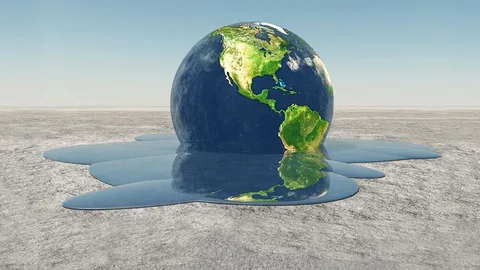Net Worths
Weather Shift: The Progression of Climate Change In the Last Ten Years

Climate change is one of the most pressing issues facing the environment today. The effects of climate change are becoming increasingly apparent in our daily lives, from rising sea levels to extreme weather events. As the planet continues to warm, the impacts on the environment are becoming more severe. Glaciers are melting at an alarming rate, sea ice is receding, coral reefs are bleaching, and sea levels are rising. These changes are having a devastating impact on our ecosystems and wildlife, posing a serious threat to the future of our planet.
Climate change is also contributing to more frequent and intense storms, droughts, floods, and heat waves, which can have devastating consequences for human populations. The need to take action to mitigate the effects of climate change is becoming increasingly urgent. We must act now if we are to have any hope of protecting our planet and its inhabitants.
Temperature Trends
Recent temperature records show a clear warming trend over the past decade. Global average temperatures have risen by approximately 1.2°C since pre-industrial times, and the rate of increase is accelerating. This warming is most visible in the Arctic, where temperatures have increased by more than twice the global average. This warming has caused sea ice to decline, glaciers to shrink, and permafrost to melt. In the Northern Hemisphere, the ten warmest years on record have all occurred since 1998.
In the Southern Hemisphere, temperatures have risen by 1.4°C since the mid-20th century, with particularly strong warming in the Antarctic Peninsula. The ocean has absorbed much of the heat, leading to an increase in ocean temperatures, with the average rise being greater near the surface. This has resulted in more frequent and severe coral bleaching events, as well as an increase in sea level rise and extreme weather events.
Sea Level Rise
Sea level rise is one of the most visible and concerning effects of climate change. As temperatures rise, glaciers, snow, and ice around the world melt, causing the ocean to expand and the sea level to rise. The current rate of sea level rise is estimated to be 3.6 mm per year, and this is projected to accelerate as the planet continues to warm. In addressing the impacts of climate change, exploring innovative solutions such as carbon dioxide removal becomes increasingly crucial to mitigating the factors contributing to rising sea levels
Sea level rise is already having a devastating impact on coastal communities, with many areas being flooded and entire islands becoming submerged. In addition to the physical destruction, sea level rise is also threatening the livelihoods of millions of people around the world as it threatens to displace coastal populations and disrupt vital fisheries. Rising sea levels are also increasing the risk of floods, storms, and coastal erosion, making it more difficult for coastal communities to protect their homes and businesses. Climate change is likely to cause sea levels to rise even further in the future, making it increasingly important for us to take action to reduce emissions and mitigate the effects of climate change.
Weather Tracking
Weather tracking is the process of monitoring and recording weather data. This data can be used to make predictions about future weather patterns, as well as to identify current and past weather trends. Weather tracking is done by using a variety of methods, including satellite imagery, ground-based observations, and weather instruments such as thermometers and barometers. Data from these sources is then collected, processed, and analyzed to create various types of weather maps and charts. This data can be used to monitor changes in weather patterns and to provide detailed information about current and past weather conditions.
Weather tracking can also be done remotely using weather APIs. APIs, or application programming interfaces, are software tools that allow two applications to communicate with each other and exchange data. With weather APIs, developers can access real-time weather data from a variety of sources, including satellite imagery, ground-based observations, and weather instruments. This data can then be used to create custom weather maps and charts, as well as to alert users of changes in weather patterns. Weather APIs are used by a variety of industries, from agricultural and transportation to retail and media. They are also used by governments to monitor and predict weather patterns and to prepare for extreme weather events.
Extreme Weather Conditions
Climate change is having a dramatic effect on extreme weather conditions around the world, leading to an increase in the frequency and intensity of storms, floods, droughts, and heat waves. As temperatures rise and weather patterns become more unpredictable, extreme weather becomes more frequent, leading to increased destruction and disruption.
Rising sea levels due to climate change are making storms and floods more destructive, as the extra water can cause more powerful surges and floods. This is especially true in coastal areas, where the rising sea level is exacerbating the impacts of storm surges and floods, leading to more destruction and displacement.
Droughts are also becoming more frequent and intense due to climate change, as rising temperatures cause a decrease in precipitation and an increase in evaporation. These droughts can lead to catastrophic crop failures, water shortages, and wildfires, making them increasingly damaging and destructive.
Heat waves are also becoming more frequent and intense due to climate change, as rising temperatures make extreme heat more common. Heat waves can lead to heat exhaustion, dehydration, and even death, making them dangerous and potentially deadly.
In order to ease the effects of climate change, it is essential to take action to reduce emissions and mitigate their impacts. This includes transitioning to renewable sources of energy, improving energy efficiency, and investing in sustainable infrastructure.

















































